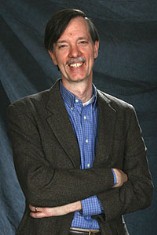Eric L. Hirsch, a professor of sociology at Providence College, recently released a report through HousingWorks RI at Roger Williams University that focused on the needs of the homeless population in Rhode Island.
The report, called “How to End Long-Term Homelessness in Rhode Island,” calls for greater investment by the state to counter a shortage of affordable apartments and increased rental subsidies for families and individuals.
Hirsch, a graduate of the University of Chicago, is an expert in urban sociology and homelessness. He spoke to the Providence Business News about his findings.
PBN: Why isn’t homelessness a greater priority in Rhode Island?
HIRSCH: To me, the big message that we’ve not gotten across is it’s very much a problem that we can solve. I think people think about shelters being the solution to homelessness. Like tonight, that’s how we’re going to count the homeless people, by how many are in the shelters. It’s not a solution. It actually institutionalizes homelessness.
PBN: How are the homeless counted?
HIRSCH: We count everyone who is in a shelter. And we send out surveys to people who don’t participate in our management information system, so they will later send back that result.
And we have teams who fan out all over the state to count people who might be staying outside. It’s timed to the end of January, because that’s supposed to be the coldest time, and people are likely to be in the shelters.
PBN: The report has a graphic that tracks the number of homeless people annually. Is this the one-night count?
HIRSCH: That’s the annual count. In a place [such as] Rhode Island, the best way to understand the nature of the problem is the annual count. Because we don’t have that many people staying outside. In the course of the year, we’ll probably get everyone through the shelter system at some point. If you’re there for just one night, we’ll count you.
In the warm states, the annual count is irrelevant. If you go to Los Angeles, you’ll literally have 30,000 people staying outside on a given night. You can’t count those people over the course of a year.
PBN: The annual count shows that since 2014, the number has consistently been rising. Why, given our strengthening economy?
HIRSCH: In the past, it’s gone up at the beginning of each recession. 1991, 2001, 2007, those were all the beginning of recessions. This is the first time in our history it’s started to go up outside a recession and I just think it’s the tightness of the housing market. The vacancy rates are so low, the rents are escalating so rapidly, that even though people are doing well economically, they still can’t afford the rents.
PBN: I was struck by the number of families (357) included in the 2017 count. Do Rhode Islanders have the wrong image of who is homeless?
HIRSCH: They absolutely do. In the 1970s, the stereotype was a pretty accurate picture. Middle-aged, white men who are chronic alcoholics. In the ’80s, it’s more economically based, and people not able to afford the rents. Now, you have a very diverse group of people, and the only thing that ties them together is they have very low incomes and are unable to afford the rents, and don’t have enough support from friends or family to double-up and avoid being on the street.
In the annual numbers, it’s about 1,000 children and 500 families, and that’s not what people usually think of [when they think of] the homeless.
Mary MacDonald is a staff writer for the PBN. Contact her at macdonald@pbn.com.













